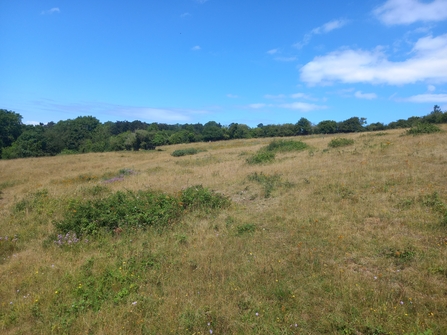This year, I’ve left a larger area of lawn to grow a bit wilder. Early primroses have given way to buttercups and long grasses with impressive seedheads, which now host the local house sparrow creche. The new arrivals are enjoying the bounty of insects lurking in the longer lawn.
Experimenting with different cutting lengths over the past couple of years has increased the array of wildflowers that are popping up in the lawn. I’ve had to remove a few thistles, and a couple of unknown shrubs attempted to come through, but the main task has been the final cut in the late summer and the removal of clippings.
On my small patch at home, it’s an easy job but, at a landscape scale, grazing animals play a crucial role in managing grassland areas, including those on Avon Wildlife Trust’s nature reserves.
The conservation grazers
The arrival of cattle at Ebdon Farm recently was a welcome return, including some wonderful Gloucesters along with Herefords and Shorthorns. During this discovery phase of one of our most ambitious projects, the cattle will help to boost floral diversity by lowering the nutrient levels to unlock hidden seed banks within the soil. Cattle leave a longer sward and areas of tussocky grass, creating good habitat for insects, and can help to manage areas of coarser vegetation.
Conservation grazing takes place at several AWT reserves with different species. Cattle can also be found grazing at Goblin Combe although the site is probably more well known for the friendly goats. The goats can easily tackle a range of grass lengths and scrubby areas and are able to cope with more challenging terrain, which is particularly useful at this site.







